It Wasn’t Only Energy Companies and Banks: The Sports Owners With Shady Ties to the Capitol Riots
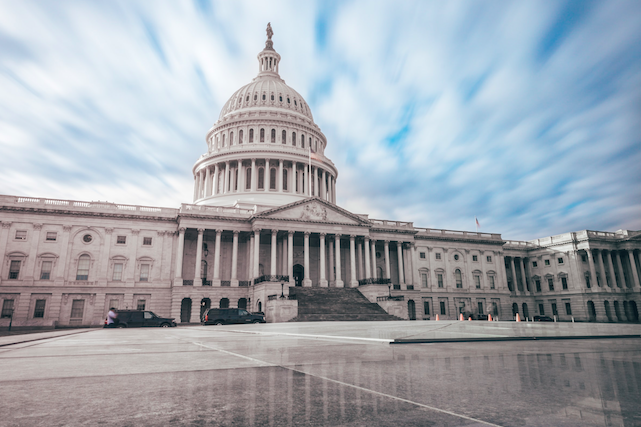
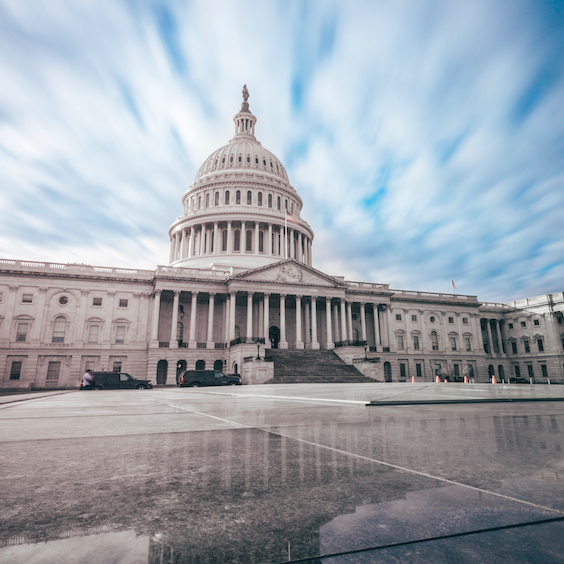
The swift reaction many companies have shown as a result of last week’s violence during the U.S. Capitol riots is almost as breathtaking as the silence they exhibited in the weeks leading up to Jan. 6. Suddenly, more companies are demanding refunds on their political contributions made to the likes of Missouri Sen. Josh Hawley. At first, this sounds like an honorable stance, but then again, politicians like Hawley made their views clear long before they took the lead in challenging the results of the November presidential election.
Some of the business community’s ties to last week's violence isn't surprising. For example, independent journalist Emily Atkin profiled some of the right-wing extremist elements working within the oil and gas sector which in turn had an active presence in D.C. last week. And while more evidence suggests the financial sector’s wallets opened wider for Democrats than Republicans during the most recent election cycle, it turns out plenty of money from bankers went to politicians who supported overturning the Nov. 3 presidential results.
Now we’re seeing more companies duck for cover as it turns out they, or their employees, supported various candidates reportedly linked to the Capitol riots or the QAnon movement. Even if those funds were sent unwittingly, the actions of some representatives such as Lauren Boebert of Colorado, who live-tweeted the location of the Speaker of the House during the riots, finally crossed the line. Over the past few days, many of these companies have said they will halt their political spending or completely shut down their campaign funds or PACs (political action committees).
But the reckoning has gone beyond the banks, energy companies, tech firms and retailers. It turns out some professional sports team owners sent checks to dodgy politicians as well, including those whose actions have direct ties to the Capitol riots.
For example, Charles Johnson, the largest shareholder of the San Francisco Giants, has donated money to Boebert. Arizona Diamondbacks owner Earl “Ken” Kendrick has also reportedly given financial support to Boebert’s campaign. In light of those revelations, Major League Baseball (MLB) has announced it will join the roster of businesses pulling the plug on political donations after last week’s violence in D.C.
Finding itself in the middle of controversy is hardly new for the MLB. During the 2018 midterm elections, the baseball league’s political action committee donated to Mississippi Sen. Cindy Hyde-Smith’s campaign — only to ask for the money back when she made off-color comments about race and lynching.
“Companies that are committed to ideals of inclusion don’t throw $5,000 at a senator who makes references to lynchings in a state with a wretched history of them while opposing a candidate who is Black," wrote sportswriter Jeff Passan at the time. “Nothing can wash away the stain of the money given to Hyde-Smith.”
Two years are a long time in politics — and in business. American voters have shown over the last several decades that they are willing to forgive, forget, or do both at the same time. But with their brand reputations on the line, companies that seek to ensure they will thrive in the long term are now evaluating how to best wield their pocketbooks. They could consider two stakeholders who could benefit from money that once went to political contributions and lobbying: their employees and local communities.
Image credit: Andy Feliciotti/Unsplash
The U.S. Prison System is Failing People and Communities Amid the COVID-19 Crisis
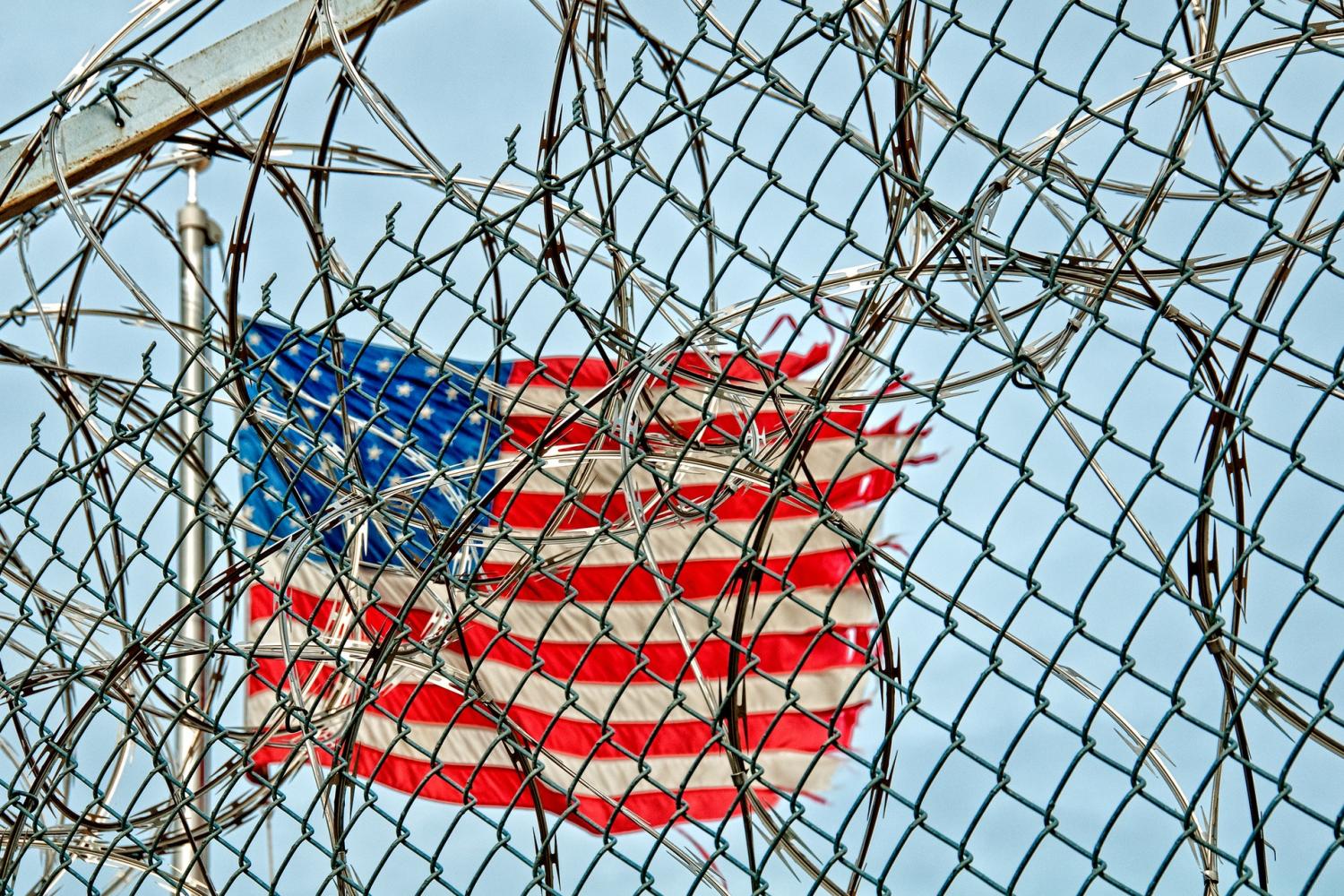
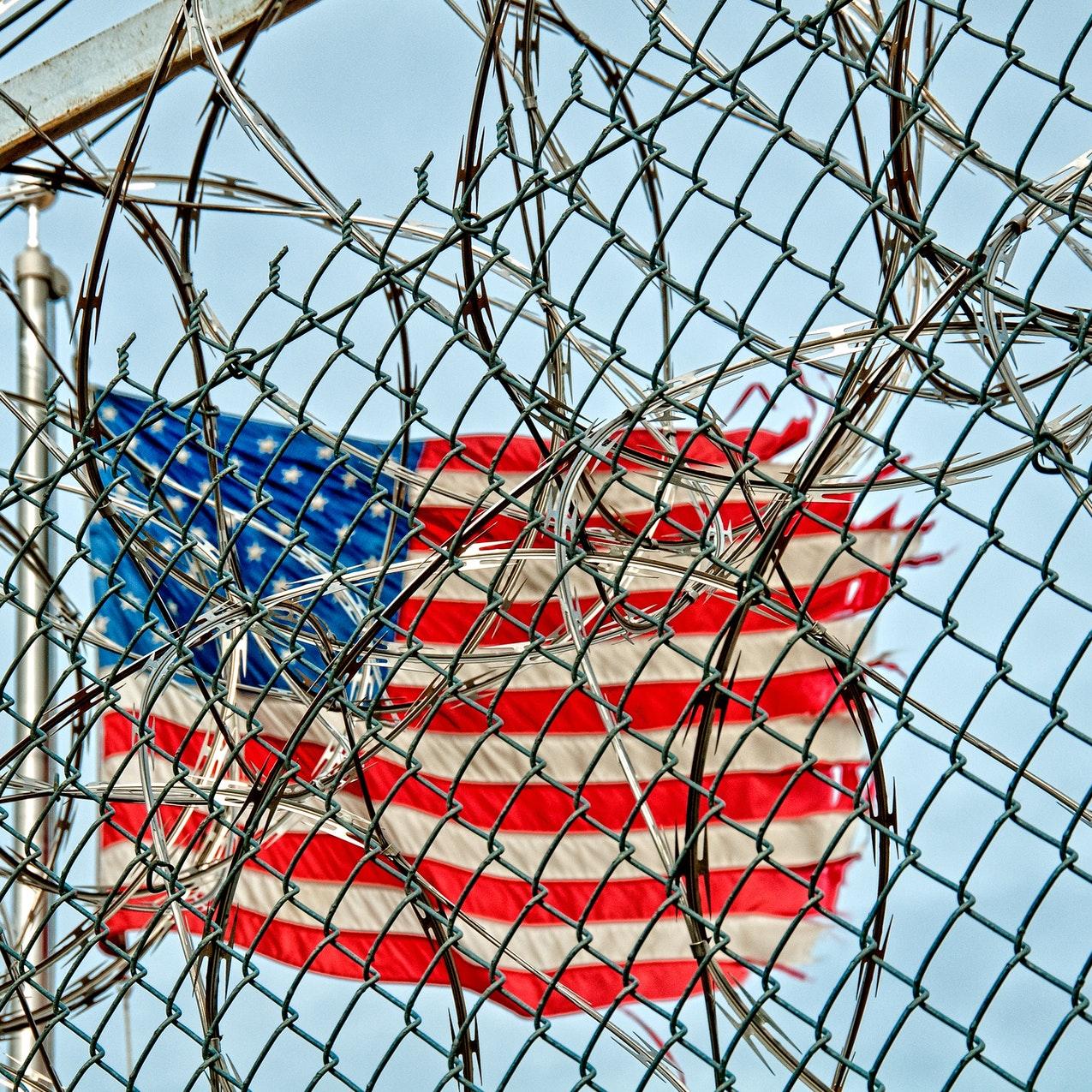
As 2021 gets underway and COVID-19 cases and deaths continue to skyrocket across the United States, recent data from the Marshall Project, a nonprofit media outlet covering criminal justice, shows that 1 in 5 people who are incarcerated in the U.S. have tested positive for COVID-19 at some point during the pandemic. This rate is more than four times higher than that of the general population. This is an opportune moment for businesses and individuals alike to reflect, take accountability, and work to repair the damage caused by the U.S. prison system.
The pandemic has unleashed a crisis across U.S. prisons
The Marshall Project has been tracking COVID-19 in state and federal prisons since March 2020 and reports that 330,000 incarcerated people tested positive for the illness and at least 2,020 have died. The findings show that positive COVID-19 cases in prisons rose steadily from the beginning of the pandemic and peaked at a rate of 25,897 cases in one week last month.
While these figures are shocking, they are also likely a gross underestimate of the actual numbers, as testing in prisons is limited and many cases likely go unreported.
The prison-industrial complex, described by Critical Resistance as the “overlapping interests of government and industry that use surveillance, policing, and imprisonment as solutions to economic, social and political problems,” has contributed to the proliferation and overcrowding of private prisons across the U.S. since the 1980s. In recent decades the prison population has increased by 700 percent, resulting in growing profits for private prisons and their suppliers as well as extreme overcrowding.
The U.S. prison system has long been a hub for infectious diseases, though COVID-19 poses an elevated threat to inmates who are unable to physically distance themselves due to overcrowding. They also often lack access to personal protective equipment and other crucial supplies like soap and hand sanitizer.
While some incarcerated people have been released early across the country due to action taken at state and county levels, the 8 percent reduction of the prison population recorded in the first half of 2020 is attributed to fewer people being incarcerated rather than existing inmates being released. Due to concerns about the coronavirus, courts have been closed, fewer people have been admitted into prisons from county jails, and parole officers have sent fewer people to prison for low-level crimes.
The links between COVID-19 and more human rights abuses
Inmates who were not released have been subjected to a troubling new practice of placing people into solitary confinement within state and federal prisons in an attempt to achieve social distancing. Virtually nonexistent throughout the global north, solitary confinement is a common practice in U.S. prisons. But when used as a prolonged or indefinite form of punishment, it is considered a violation of human rights under international law.
The human rights concerns for people in prison extend beyond the increased use of solitary confinement and insufficient measures to prevent the spread of COVID-19, permeating the very fabric of the U.S. through racist policies and practices.
Black people are five times more likely to get stopped by police without just cause and are also incarcerated at more than five times the rate of white people in state prisons around the country. While current population data reflects that 32 percent of the U.S. population is Black and or Latinx, that demographic represents 56 percent of the prison population, indicating vastly disproportionate rates of incarceration based on race.
The rates of COVID-19 hospitalizations and deaths also paint a picture of extreme inequality. According to the U.S. Centers for Disease Control and Prevention (CDC), Black Americans are hospitalized for COVID-19 at a rate 3.7 times higher than that of white people; Latinx citizens are hospitalized at 4.1 times the rate, and the death rate for both groups is almost three times that of white Americans.
The human story behind these numbers is one of the compounding effects of racist policies in the criminal justice and health systems, which continue to devastate millions of people around the country who suffer from prolonged separation from family members or are left to grieve the passing of loved ones in isolation.
Business is complicit in abuses within the U.S. prison system
Too little is being done to put an end to these racist practices, especially as the prison-industrial complex increasingly profits from inmates during the pandemic. For example, since prisons have gone on lockdown and banned all visitors to combat the coronavirus, phone calls are now the only way for inmates to be in touch with the outside world. At around $1 per minute, these calls are expensive and place an enormous financial strain on incarcerated people and their families, while delivering substantial profits to the two companies that control the market.
Beyond the private prison industry, the business world at large is also complicit in reinforcing these systems of inequality. While 2020 was a hallmark year for corporate activism in the face of climate change, police brutality, and racism, most companies have been remarkably silent when it comes to injustice in the U.S. prison system.
This silence is especially notable given that many people who are currently incarcerated and at heightened risk of contracting COVID-19 are at an elevated risk due to the racist policies these brands were protesting in the first place.
As COVID-19 continues its spread, this is a reminder that now is not the time for silence, inaction, or apathy; it is the time for action in support of health and human rights. The well-being of our communities depends on it.
Image credit: Pixabay
In the Biden Administration, Business Leaders Have New Opportunities to Lead on Environmental Action
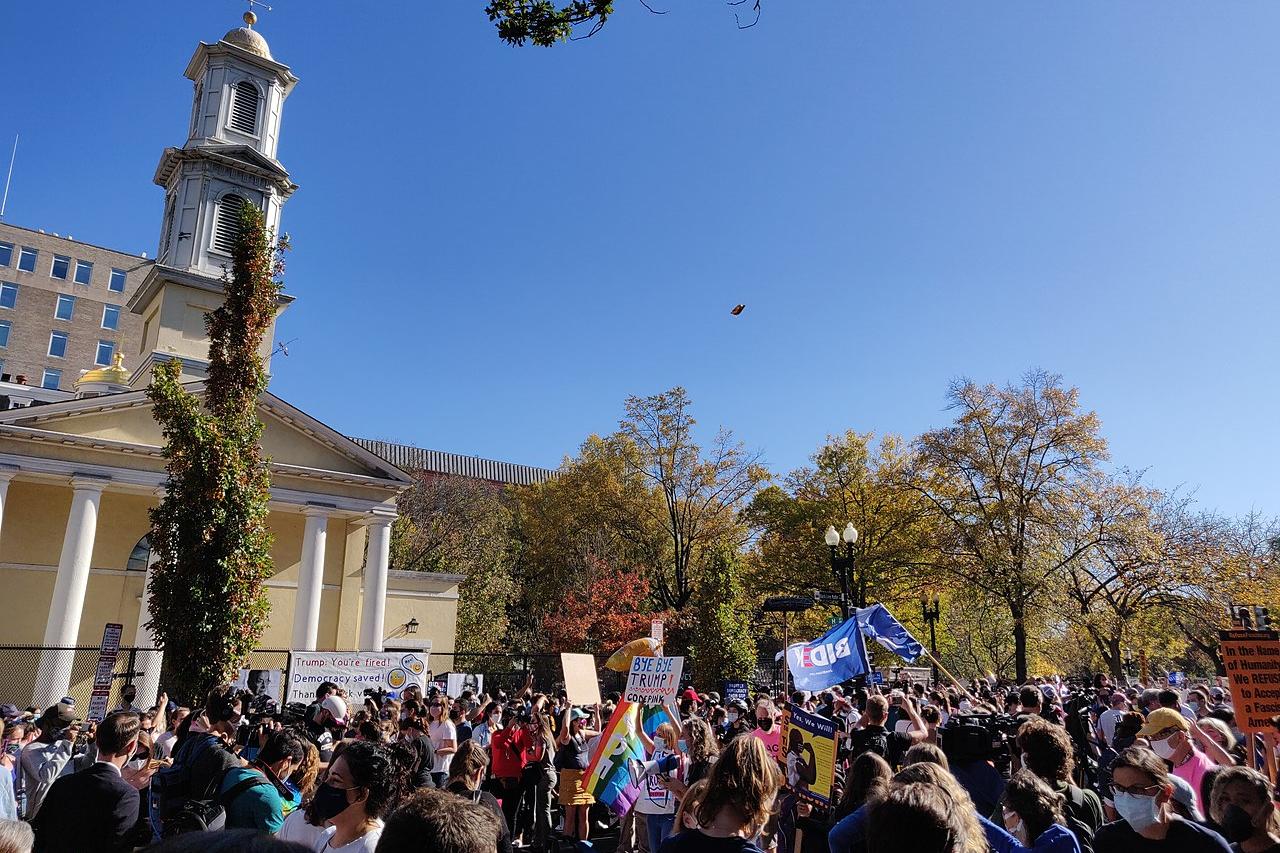
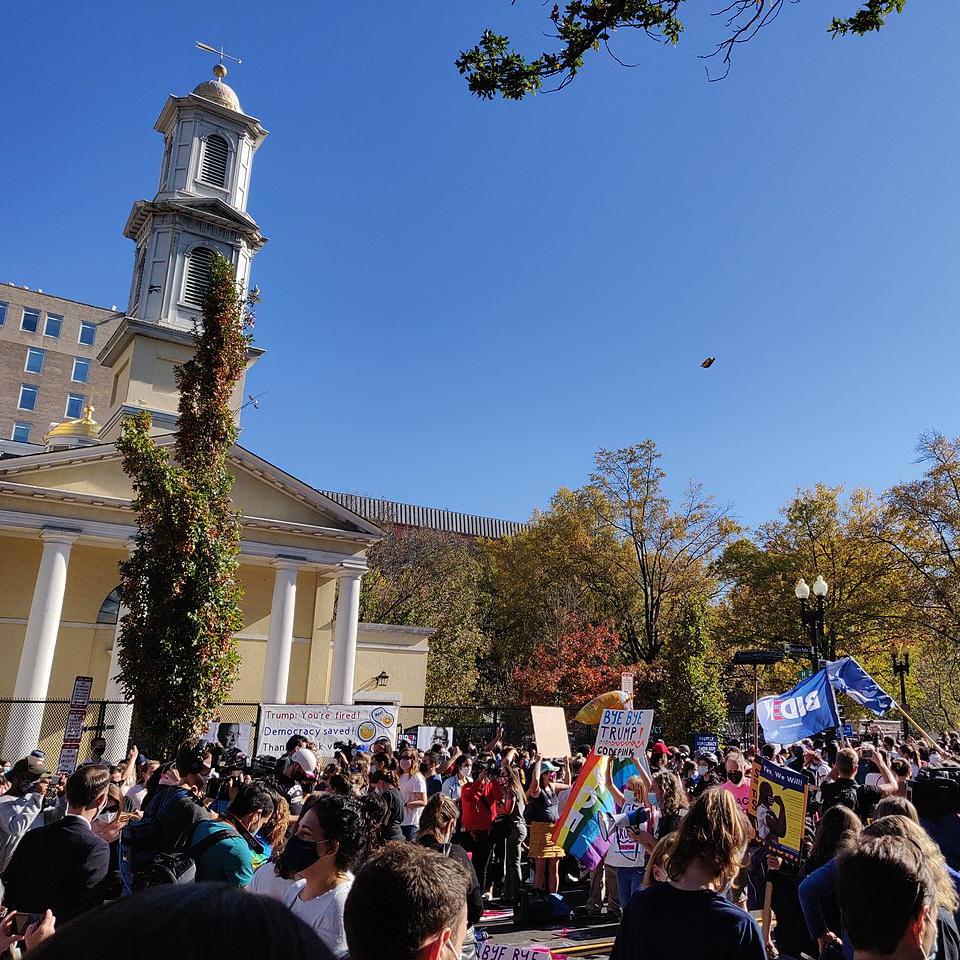
When the Joe Biden administration moves into the White House on Jan. 20, the president-elect faces the monumental task of undoing the damage of the Donald Trump administration while managing a global pandemic and economic crisis. That leaves little room for actual progress, especially in regard to environmental issues. Nevertheless, businesses leaders can make a difference by applying their resources and know-how to help steer the civic discourse toward a pathway that respects science and honors civic responsibility. To start, all stakeholders can eliminate the sovereign citizen movement, sparked by Trump, that has been a roadblock to environmental stewardship over the past four years.
The Trump effect: Everyone’s an expert
Among the many disturbing themes woven through the Jan. 6 insurrection is the idea that an individual can only believe and support something when they see it with their own eyes.
President Donald Trump rose to power as the personification of that idea. Long before he entered the 2016 campaign cycle as a candidate for president, he grabbed the media spotlight by demanding to see the “long form” of President Barack Obama’s birth certificate.
The incessant demands accomplished two goals. One was to feed “birtherism” conspiracy theories regarding Obama’s country of origin, in an attempt to undermine his constitutional right to hold office. That goal, though, was secondary. The main objective was to cement Trump’s right to personally view the evidence and render final judgement on the matter.
The right of Trump, a single individual, superseded every other person, including the tens of millions of voters who chose Obama for their president and the thousands of elected representatives who supported his campaign — not to mention the various documents and other evidence proving, without a shadow of a doubt, that Hawaii is in fact one of the 50 U.S. states.
A movement that stands in the way of the Biden administration
That “I’m the decider” attitude runs deep in bogus constitutional theories such as the sovereign citizen movement, in which individuals assume the right to decide that they are not subject to the laws that govern everyone else.
The movement first took hold in the 1980s as a manifestation of white supremacy. Later it also began attracting non-white adherents. By 2010, the FBI labeled the movement a “terrorist threat” and a threat to law enforcement.
More recently, the white element of the sovereign citizen movement burst into the media spotlight when Ammon Bundy, his brother Ryan, and a group of armed white men overtook buildings at the Malheur Wildlife Refuge in Oregon for six weeks in 2016. When finally brought to court, Ryan Bundy later applied the sovereign citizen concept to argue in his defense.
Trump did not create the sovereign citizen movement, but he recognized its power to persuade individuals that the law does not apply to them. By Jan. 6, millions of otherwise ordinary citizens were firm in their belief that a free and fair election was an illusion, and thousands of them marched on the Capitol to take by force what they feel the law denied.
Sovereign citizens vs. environmentalists: Environmentalists win
While coated with a constitutional veneer, the sovereign citizen movement at heart is about personal privilege above the law. It’s no accident that the Bundy brothers’ father, Cliven Bundy, was notorious for illegally grazing cattle on federal land, and that his sons chose to prove their point by illegally occupying a federal nature preserve.
Seen through this lens, Trump’s dismantling of environmental regulations is part and parcel of his strategy for appealing to white supremacy in order to attain and hold power. He almost succeeded on Jan. 6, as armed, predominantly white insurrectionists literally came within minutes, if not seconds, of kidnapping members of Congress with intent to kill.
But he did not succeed. On Jan. 20, a new president with a far stronger environmental and civil justice agenda will take office.Undoing the damage of the Trump years will be a monumental task, but many business leaders have already done the important groundwork of enlisting employees and the public in civic activities that benefit their communities, especially in the area of environmental activities.
Moving forward, business leaders can use their track record on environmental activities as a springboard for engaging the public in the four intertwined priorities outlined by the Biden administration, which are defeating COVID-19, economic recovery, racial equity and climate change.
As a guidepost, businesses can take some cues from environmental organizations that have been analyzing Biden’s proposals and identifying pathways for taking swift, effective action.
Some of these priorities will sound familiar to many top executives. The Environment America Research and Policy Center, for example, has issued a “First Things to Fix” report that identifies having the Biden administration rejoin the Paris Agreement on climate change as a key priority.
U.S. businesses have continued to support the science-based goals of the Paris Agreement. The new Biden administration will support and amplify those efforts, providing business leaders with a powerful platform to make decisions based on science.
In addition, hundreds of U.S. mayors pledged to continue supporting the Paris Agreement during Trump's presidency. The Biden administration will enhance opportunities for businesses to connect their environmental initiatives with fact-based civic goals in their own communities.
Those relationships will also help grow the environmental justice movement and provide more support for a “just transition” from conventional jobs to green jobs. Labor unions were once skeptical of the benefits, but in 2019 the AFL-CIO signed a joint pact with 75 CEOs affirming the connection between climate action, labor and environmental justice.
Like it or not, globalism is here to stay
The EARPC report identifies 14 other priorities that can provide businesses with a springboard to engage employees, and their communities, in the practice of civic responsibility, fact-based action and care for the common good.
Chief among them are restoring the full force of the Clean Water Act, cutting vehicle emissions, reinstating a broad greenhouse gas performance standard for transportation, tightening rules for toxic waste discharges, strengthening air quality standards, closing down unlined coal ash ponds, strengthening environmental review processes, protecting endangered species, tightening up standards for mercury and other air pollutants from fossil power plants, reducing pollution from industrial flares, remediating lead pipes, and restoring energy-efficiency policies.
The report also identifies several other areas that address issues that are mainly regional or local, but which have an impact on global efforts to preserve biodiversity and reduce the impacts of climate change.
That includes protecting Alaska’s Tongass Forest, halting oil and gas leases in the Arctic National Wildlife Refuge, withdrawing the Trump offshore drilling plan, reinstating protections for the Northeast Canyons and Seamounts National Marine Monument off the coast of New England, and updating emissions regulations for oil and gas drilling sites.
The report also identifies two priorities that address global treaties for phasing out the use of hydrofluorocarbon (HFC) climate pollutants and regulating the international waste trade.
Of course, business leaders could carry on their environmental activities without engaging their employees and the public in broader issues.
However, the events of Jan. 6 were one horrifying demonstration of a breakdown in civic awareness and personal responsibility. Business leaders can act now to help ensure that a second one never occurs. Aligning with the Biden administration would be a start.
Image credit: Sdkb/Wiki Commons
As Chaos Leaves Consumers Craving Comfort Food, One Brand Scores a Sustainable Makeover


Let’s face it, no matter where your sympathies may lie over what’s been going on in the nation’s capital, we’re all craving comfort food. Whether you were infuriated over the insurrection or believe free speech is under attack, we all crave carbs to curb the angst.
Even before last week’s violence, the months-long pandemic has given a lift to simple, carb-heavy pleasures. Washingtonians now apparently have a thing for Philly cheesesteaks. Chicago restaurants capitalized on pre-election stress. California’s Central Valley has witnessed residents going for even more timeless Mexican favorites like pozole and cocido. And at the beginning of the pandemic, food processing companies couldn’t make mac and cheese fast enough.
Now the folks behind a comfort food icon, Kraft Mac & Cheese, are striving to make the product a little less guilt-inducing.

No, we’re not talking about replacing that gooey, neon-hued cheese — that’s always going to be around. Face it: Half of us love it. The other half feign horror at the ingredients, but while they profess to avoid the stuff, many indulge when no one’s looking. If you don’t have a box stashed in your cupboard, you’re not living.
Here’s what’s changing: For those of us who can’t even bother to boil some water and want even faster instant gratification, Kraft also offers a microwavable version that's ready in less than five minutes. Sales of those microwavable cups have been on the upswing, which makes sense: If you have yet another Zoom call, you want something fast to get you through that next hour-long virtual slog.
But here’s the sticky, gooey situation: Recycling systems across the U.S., and around the world, have been torn apart as plastic trash exports have screeched to a halt and single-use plastics keep piling up. Even if your local garbage pickup service accepts plastic, there’s another problem: Many recyclers won’t take plastic items that still have paper or plastic labels affixed to them.
So, Kraft Heinz says it’s come up with an answer: It’s testing out a recyclable, fiber-based cup (shown above). Instead of a resin-or paper-based label, branding and barcodes will be directly printed on the cups. The company says the goal is to develop a cup that is both recyclable and able to break down at industrial-scale composting sites. If all goes to plan, we may see these cups of comfort food goodness in stores by the end of this year.
Image credit: Hermes Rivera/Unsplash
Greetings from the Corporate Defenders of the U.S. Capitol and Democracy
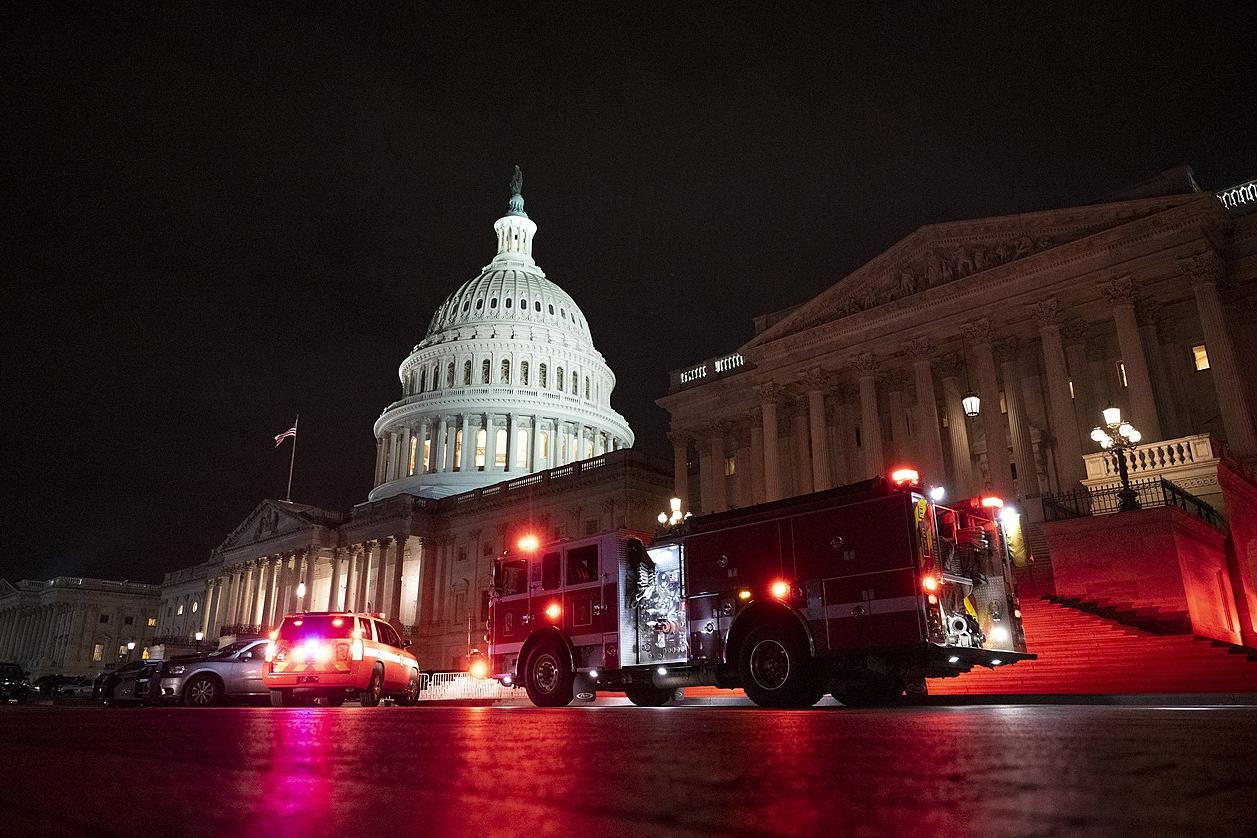
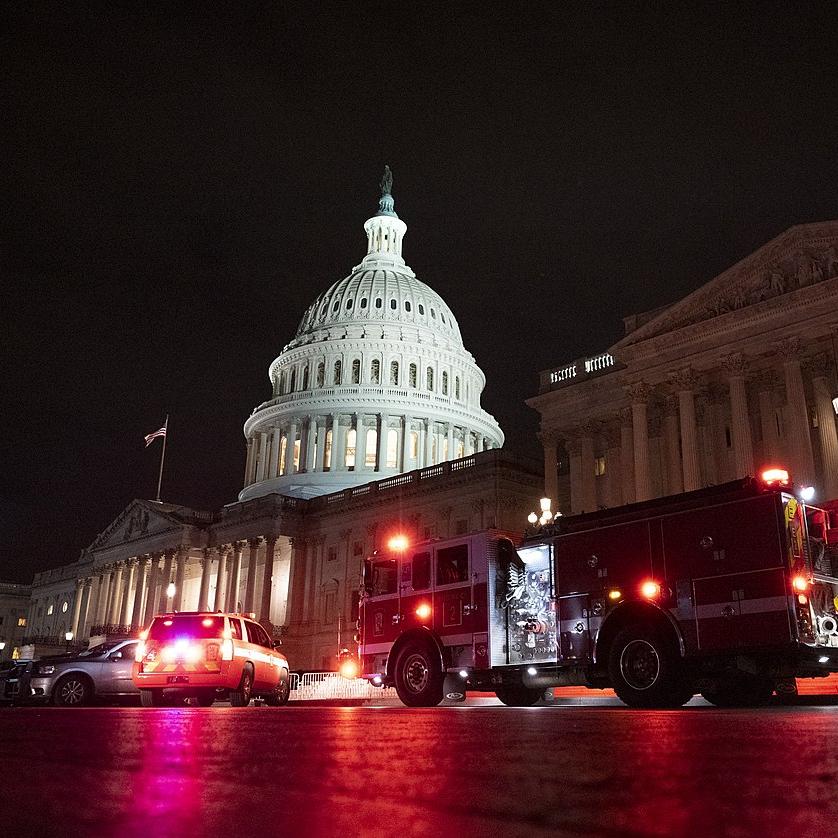
In the weeks leading up to the failed insurrection on Jan. 6, many U.S. business leaders refrained from calling out President Donald Trump for lying about the results of the 2020 election. However, inciting a mob to attack the U.S. Capitol building with murderous intent was the last straw. Several top U.S. companies have already taken steps to hold Trump and his supporters to account for their actions. Nevertheless, the danger is still ongoing, and a true reckoning will not occur until the trickle of corporate censure turns into an irresistible torrent of unequivocal condemnation.
Top U.S. greeting card company has had it with your insurrection
In the days leading up to the Jan. 6 insurrection, Alabama Rep. Mo Brooks, Missouri Sen. Josh Hawley and Texas Sen. Ted Cruz emerged as leading figures among a group of 147 Republican members of Congress who pledged to object to the Electoral College vote. Though widely viewed as a toothless stunt, together they provided Trump with a false sheen of constitutional legitimacy and abetted his efforts to remain in office by any means necessary.
Among the news organizations tracking the issue, the newsletter Popular Information compiled a list of corporations that have pledged to stop donating to those 147 Republican officials, either temporarily or forever.
The Blue Cross Blue Shield Association PAC is one representative example. "In light of this week’s violent, shocking assault on the United States Capitol, and the votes of some members of Congress to subvert the results of November’s election by challenging Electoral College results, BCBSA will suspend contributions to those lawmakers who voted to undermine our democracy,” the group told Popular Information’s Judd Legum.
Similarly, Marriott International stated: “We have taken the destructive events at the Capitol to undermine a legitimate and fair election into consideration and will be pausing political giving from our Political Action Committee to those who voted against certification of the election.”
Others taking up the same position include American Express, Commerce Bancshares (the holding company for Commerce Bank), Dow, Inc., Boston Scientific, Citibank, 3M, JPMorgan Chase, Mastercard, Charles Schwab and Microsoft.
Popular Information also highlighted Hallmark for going above and beyond. Instead of simply suspending future donations, Hallmark stated that it will demand the refund of a prior $3,000 donation to Sen. Hawley. The company will demand an additional $5,000 back from newly elected Kansas Sen. Roger Marshall, who also objected to the Electoral College vote before the storming of the U.S. Capitol.
“Hallmark believes the peaceful transition of power is part of the bedrock of our democratic system, and we abhor violence of any kind. The recent actions of Senators Josh Hawley and Roger Marshall do not reflect our company’s values. As a result, HALLPAC requested Sens. Hawley and Marshall to return all HALLPAC campaign contributions,” Hallmark told Popular Information.
This trickle really could turn into a flood
Goldman Sachs and Facebook are among a dozen or so other corporations that expressed a middle ground to Popular Information. They condemned the violence but suspended donations to both the Republican and Democratic parties, or simply pledged to study the matter further.
As more evidence emerges about the extent of the planning and premeditation involved in the Jan. 6 insurrection and attack on the U.S. Capitol, Goldman Sachs and Facebook may be forced to recalibrate their positions.
That could happen sooner rather than later, partly due to pressure from employees.
Earlier on Monday, for example, Popular Information reported that AT&T was still studying the issue. By Monday afternoon, Reuters reported a statement from AT&T, in which the company wrote that it decided on more forceful action after a phone meeting held by employees on its PAC board.
AT&T will “suspend contributions to members of Congress who voted to object to the certification of Electoral College votes last week,” the company told Reuters.
After the attack on the U.S. Capitol, there's the brand reputation factor
The suspension of financial support from campaign donors is just one part of a larger bottom-line puzzle emerging from the wreckage of the Jan. 6 insurrection.
News and entertainment organizations that have enabled media personalities to support Trump’s lies suddenly appear concerned about their legal exposure and the potential loss of advertising dollars.
That appears to be the case with Westwood One, which has 8,000 broadcast radio affiliates in its stable along with 416 radio stations that it owns and operates through its Cumulus branch.
Cumulus is known for cultivating right wing on-air personalities, fostering a media environment that supported President Trump’s lies about the 2020 election. On Monday, the website Inside Music Media reported that Cumulus issued a blanket warning that it would fire any host who continued to support Trump’s lies about the election.
The story was soon picked up by other leading news outlets including the Washington Post, which wrote that Cumulus took action to right its ship on Jan. 6, even as the attack on the Capitol building was under way.
The New England news organization GoLocalProv posted part of the Cumulus memo signed by EVP Brian Phillips, who emphasized that the ban includes any coded references that suggest support for President Trump's claims.
"There will be no dog-whistle talk about 'stolen elections,' 'civil wars' or any other language that infers violent public disobedience is warranted, ever. Through all of our communication channels, including social, we will work to urge restoration of PEACE AND ORDER,” Phillips wrote.
That forceful directive seems to have sparked Facebook CEO Mark Zuckerberg into taking the long overdue step of removing “Stop the Steal” content from his platform, though it may be too late to stave off a fresh wave of advertiser boycotts.
Cumulus most likely had its advertisers in mind, too, but there may also be larger forces at work. On its website, Westwood One lists the NFL, the NHL, the NCAA, the Olympics and the Masters golf tournament as its brand partners.
That entire group has remained eerily silent so far, but in a hint of things to come the Professional Golfer’s Association board of directors voted to pull the 2022 PGA Championship out of its contract to play at a Trump golf club in Bedminster, New Jersey.
We’re not out of the woods yet
All in all, the corporate response seems to be building toward a massive repudiation of Trump and his supporters, but too slowly.
The FBI has issued warning of more violence in the days and weeks ahead, and in all 50 states in addition to Washington, D.C.
More business leaders need to act now, and act forcefully, to hold Trump and his allies to account for their actions by any means necessary, whether that means withholding financial support from politicians or firing any employee or executive who threatens the peace and security of the nation.
Image credit: DHS/Wiki Commons
Flight Attendants Set the Bar High for Employee Activism After the Capitol Breach
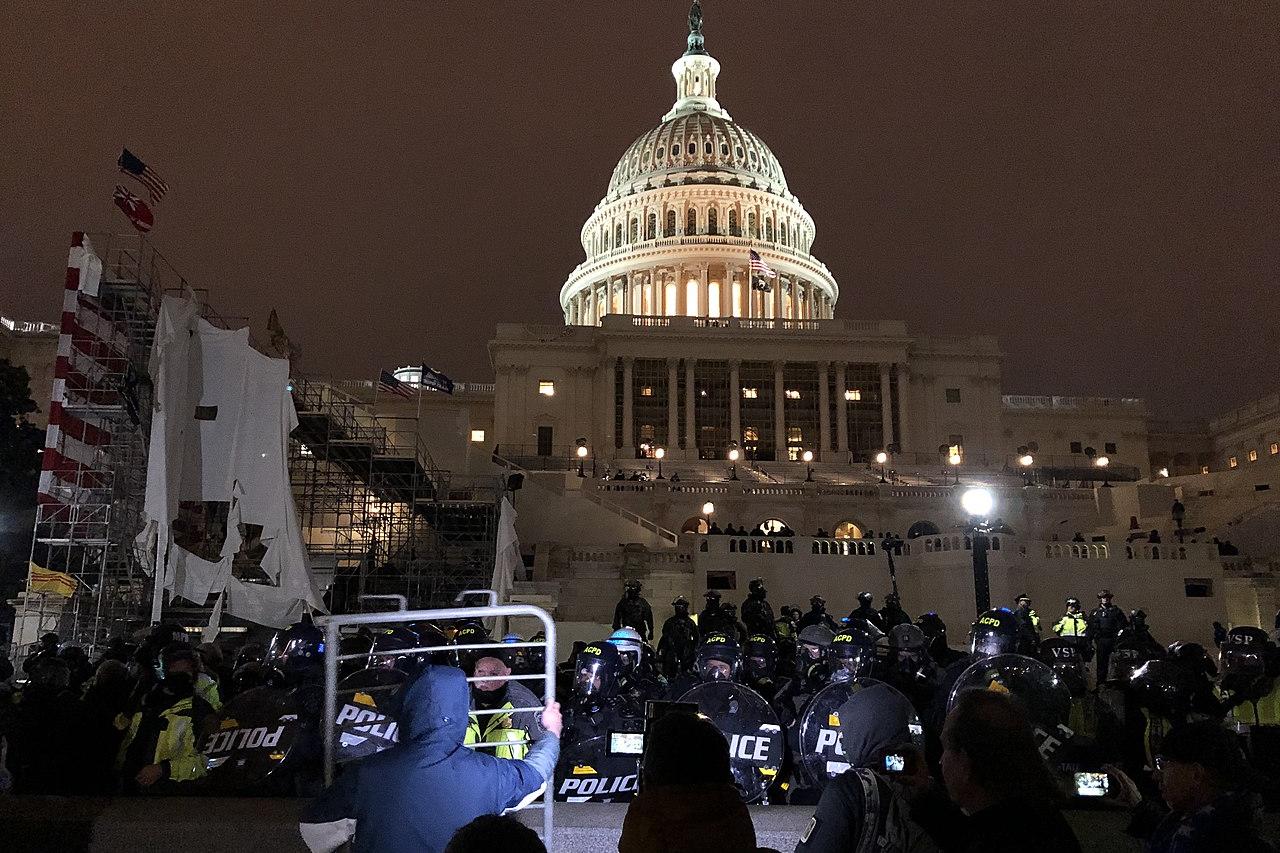
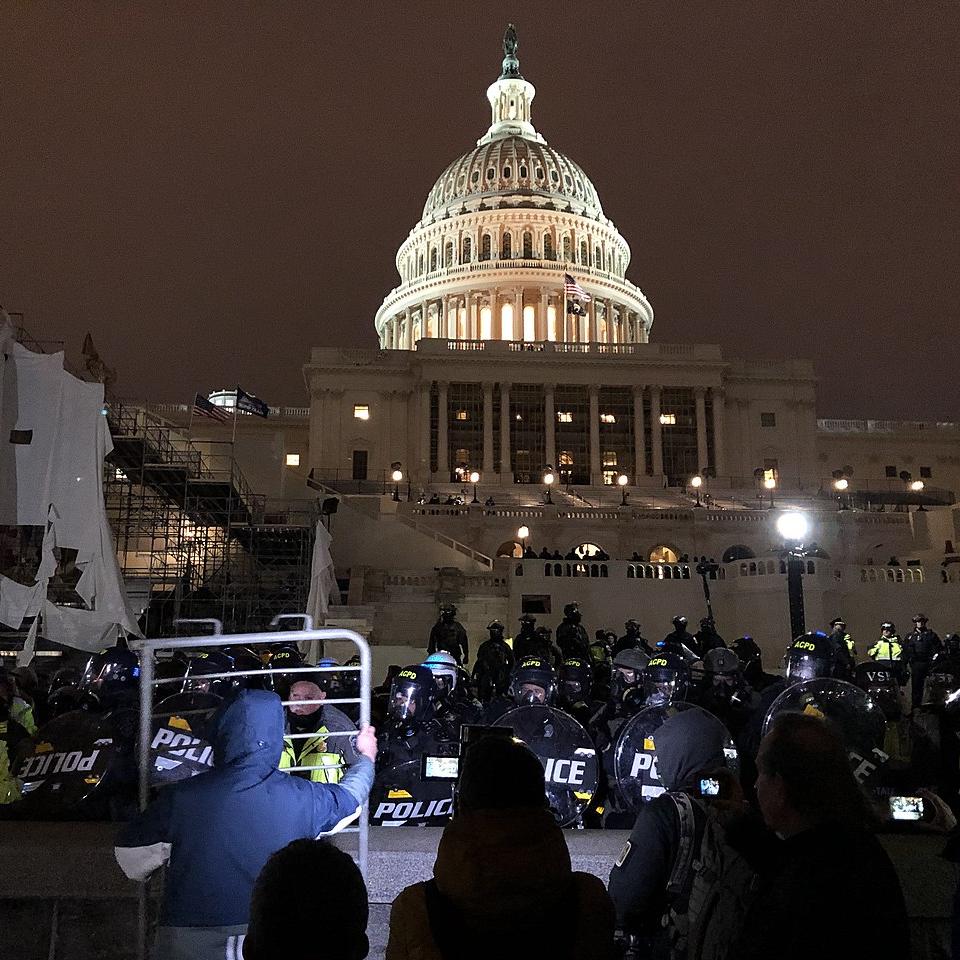
A week after the U.S. Capitol breach, it’s become clear the riots were much worse than we thought. Meanwhile, workers across many industries have drawn a line in the sand, telling their employers to take action. We saw this at some of America’s largest tech companies, including Microsoft, where employees spoke out against past political donations to the likes of Sens. Ted Cruz, Josh Hawley and Lindsey Graham.
Pulling the plug on political donations
Some companies are completely shutting off the political donation spigot. BP, for example, said its employee political action committee will hold off on sending checks, period, for at least six months. Critics, however, note this is simply following the “both sides” playbook long flaunted by the outgoing U.S. president and his supporters.
"This is not a time to say, 'Oh, both sides did it.' What the hell did the Democrats do this week except stand up for the Constitution and the rule of law?" said Rep. Sean Patrick Maloney of New York during a Monday interview with MSNBC. “Those corporations have been playing footsie with this administration for years; they should get clear — if they want to get some credit for not supporting this kind of activity, then they should get clear on who did it.”
There is no 'both sides' when it comes to the Capitol breach
One group of Americans that isn’t buying the “both sides” argument are flight attendants working for U.S. airlines. That shouldn’t be a surprise — many were subjected to ugly incidents in the days leading up to last week’s violence, as summed up by the harassment Sen. Mitt Romney endured at an airport not long before Congress voted on certifying the Electoral College results.
While most discussions of the Capitol breach have focused on how to punish those involved — whether they be the politicians who incited the riot or the terrorists who carried it out — these airline employees are taking a long-term view in working to ensure such violence never occurs again.
The Association of Flight Attendants (AFA), which claims to represent over 50,000 flight attendants working within 17 airlines, called for stricter enforcement of flight safety rules after reports emerged of horrific behavior on flights going into the Washington, D.C. area in the days before the Capitol breach.
About time for a no-fly list?
Since then, flight attendants and the union’s leader, Sara Nelson, have called for greater cooperation between the federal government’s law enforcement and national security agencies. The goal would be a no-fly list that includes anyone who was verified as participating in last week’s riots. “At the least, these individuals should be flagged for additional screening that includes a behavioral assessment at the airport by people who are trained to do that, and to determine whether or not they're going to be a risk on the flight,” Nelson told Forbes.
As the federal government moves at a snail’s pace to hold those responsible for the Capitol breach accountable, it’s been left up to citizen groups such as airline employees to find the most logical and forceful recourse, in this case by restricting something these domestic terrorists cherish as a tool to enact violence: their freedom of movement.
The AFA’s bold stance on the Capitol breach puts them in curious company with the likes of Hallmark and New England Patriots head coach Bill Belichick. What do these three have in common? They are speaking out, taking action, and telling the truth with far more force than the GOP leaders who, for the first time ever, are begging for unity after they stood by while a mob tried to kneecap U.S. democracy.
Image credit: Tyler Merbler/Wiki Commons
Corporations Demand Refunds from the 'Sedition Caucus'
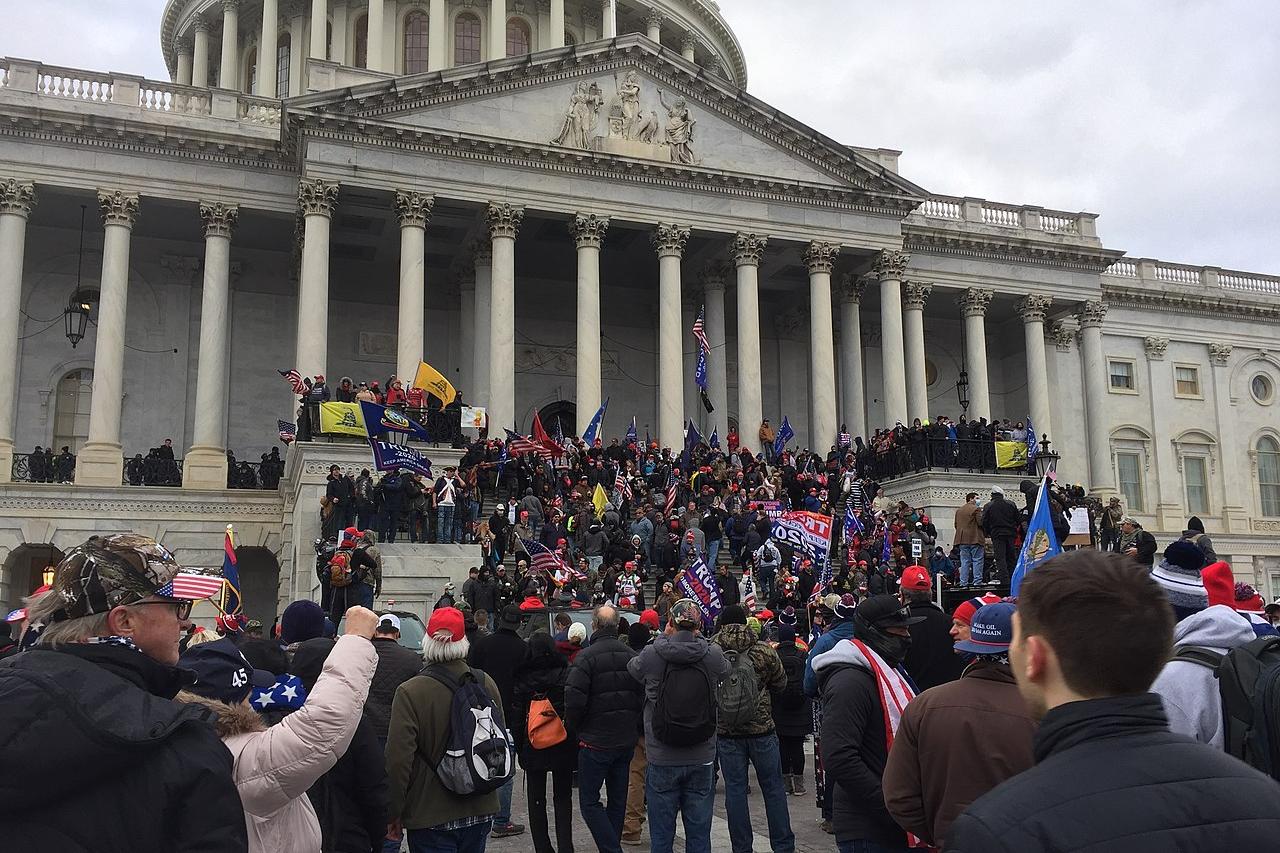
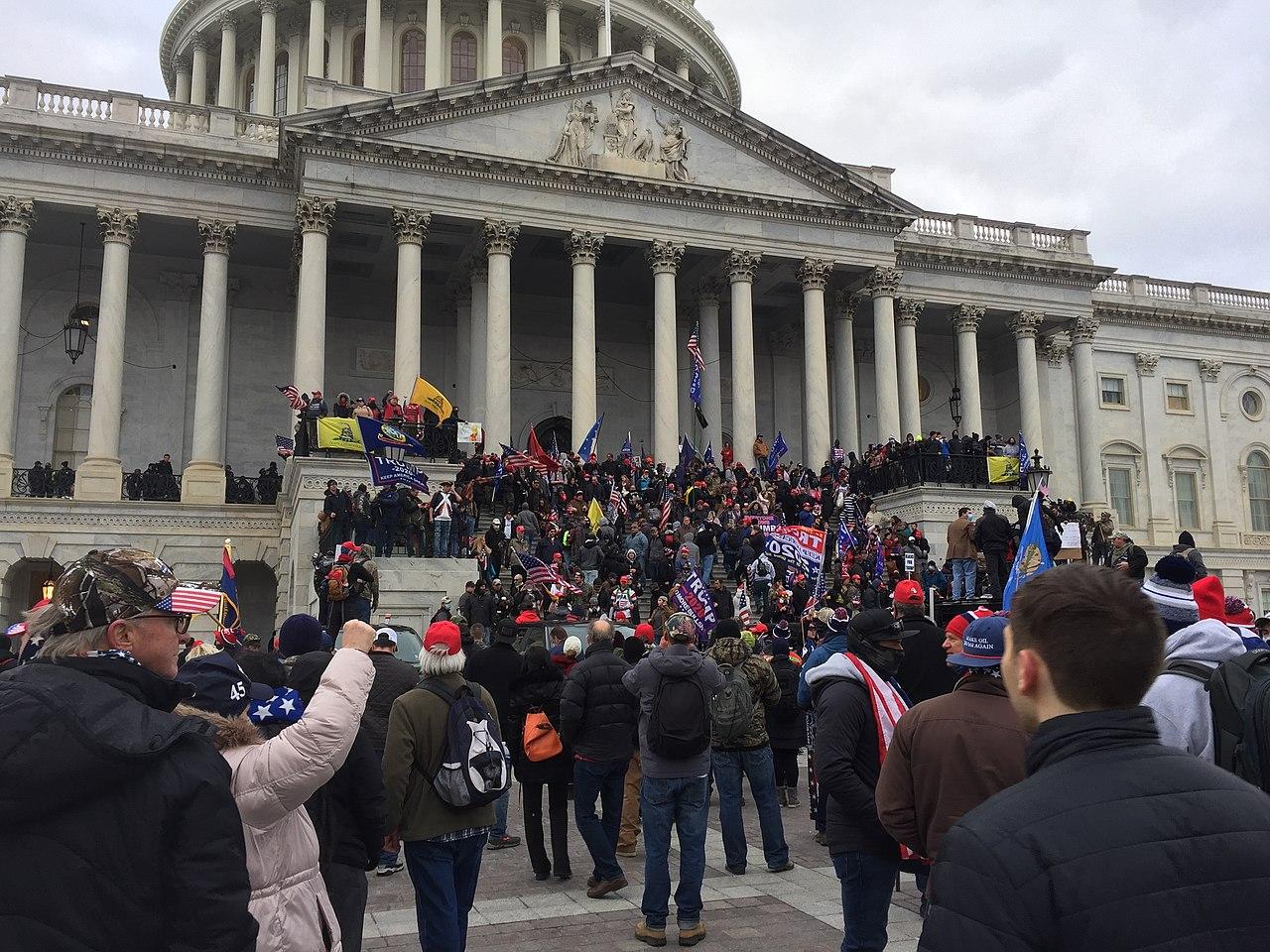
It takes a lot for anyone, or any organization, to ask for a gift back. Hence it's hard to ignore the symbolism of Hallmark, the iconic Kansas City-based greeting card and gift product company, asking Josh Hawley, Missouri senator and leader of the so-called "sedition caucus, to return past political contributions. The company, which like many pools together political contributions from employees and retirees and funnels them to candidates running for office at all levels of government, has also made the same ask from newly elected Sen. Roger Marshall of Kansas.
Hallmark’s request comes in the wake of announcements over the weekend made by corporations including Blue Cross Blue Shield, Marriott and Commerce Bankshares, all of which told independent journalist Judd Legum they would cease donating money to any members of Congress who had a role in attempting to overturn the Nov. 3 presidential election. They were joined by the likes of AT&T, which said it would also halt contributions specifically to any member of Congress who voted to reject the certification of the Electoral College results.
Almost a week after the U.S. Capitol breach, it’s clear from videos and eyewitness accounts that the severity of the insurrection is worse than first thought. For now, leaders of the so-called sedition caucus, notably Hawley and Texas Sen. Ted Cruz, have not only seen their long-term presidential aspirations put on hold — if not shattered — but they’ve also managed in the span of a few hours to rank among the most toxic brands in the U.S.
It’s too soon to tell if the actions these companies have taken against the sedition caucus will culminate in long-term decisions that could secure U.S. democracy. Or, to paraphrase the editorial board of the St. Louis Post-Dispatch, they may simply serve as an attempt at “C.Y.A.” to inoculate companies from accusations that their political contributions were part of this problem, doing little to help fix democracy and public discourse in the U.S.
After all, many of these companies funded political operations that allowed state legislatures to take gerrymandering to a new level a decade ago; those funds also made it possible to bankroll the passage of voter identification measures as well as voter suppression efforts that in particular targeted Black Americans. Those checks came “not only from the individual villains who’ve soaked up the most progressive outrage and attention, but from a number of companies familiar to the American public,” Osita Nwanevu wrote in the New Republic only moments before the Capitol riots.
Many of these companies, no matter what their industry, have donated to both major political parties, which at first makes sense logically: The business community wants to hedge its bets depending on who wins an election. But as we’ve seen last summer with the rising calls of social justice, there is no “both sides” on some issues — whether that’s the value of Black Americans’ lives or ensuring American democracy.
The events of the past week have left behind many losers, but there could be one eventual winner: publicly-funded elections. “Part of the blame lies with a campaign finance system that unfairly stacks the deck in favor of the few donors able to give large contributions,” says the Brennan Center for Justice. “Citizens United and other court rulings ended decades of commonsense campaign finance laws. Now a handful of wealthy special interests dominate political funding, often through super PACs and shadowy nonprofits that shield donors’ identities.
If these companies really want to ensure everyone has a voice, they can do more than stop funding politicians and hope they avoid another scenario like that of the sedition caucus — they could demonstrate that they are a force for good and lobby for publicly-funded elections, helping to find a path toward scuttling the 10-year-old Citizens United v. FEC Supreme Court decision, one that also helped pave the path to last week’s disaster.
Image credit: TapTheForwardAssist/Wiki Commons
How the Right Investments Can Become a Tool to Tackle Climate Change


Weather and climate disasters in the U.S. shattered records last year, according to a report the National Oceanic and Atmospheric Administration (NOAA) released last week, which was largely lost in the news of the extremist insurrection and siege of the U.S. Capitol building. The country was rocked by 22 separate disasters costing over $1 billion each, surpassing the previous record of 16 billion-dollar disasters linked to climate change in both 2011 and 2017.
With numbers like those, it’s no surprise that investment managers continue to look at environmental, social and corporate governance (ESG) funds as an area with huge potential. While the private sector has made some strides, opportunities abound, and investment groups like Invesco see benefits in using tools such as the Transition Pathway Initiative (TPI), an asset-owned project that provides data to guide informed investment decisions.
The case for better data on climate preparedness
The TPI tool assesses companies based on their preparedness for the transition to a low-carbon economy. Engagement with the initiative gives investment groups such as Invesco “a direct opportunity to structure a conversation" with the companies in their portfolios, said Glen Yelton, the firm's head of ESG client strategy in North America. "Additionally, as the highest emitting sectors are the focus of TPI, the resulting disclosure and transparency will have a disproportionate impact on evaluating climate transition efforts,” he continued.
Investors can then integrate that data into their investment analysis. As the data sets grow, investors can then track and compare changes over time regarding a particular company’s performance on ESG indicators.
One of the trends that continues to emerge in the ESG space is shifting priorities to align several components for better targeted investing. For example, since the start of the coronavirus pandemic, the intersectionality of issues such as inequality, environmental and climate justice, climate change, and systemic racism has been made abundantly clear.
To that end, companies need to think of a bigger picture in how they set up their ESG priorities. Yelton said: “The increased attention being paid to various topics has just amplified the message that these are matters that cannot be pushed off until next month or next year or next decade for consideration and action. Collective investor initiatives are a powerful tool to influence change and collaborate with corporations in their transitions [to a more sustainable future].”
Climate change and its related problems will continue to “drive assets away from strategies that are apathetic to climate change and [toward] those that are underwriting and investing in action to address the fundamental issues,” Yelton predicted. More and more, the costs and opportunities will be too great for any company to ignore.
Broad action across all fronts is needed to address climate change
While economics and the pressure to align with societal goals will drive investment decisions, this won't happen in a vacuum. Government support and policy can together help secure better regulatory certainty and fair-play rules to frame investment opportunities. Further, government can and should invest in solutions for climate change to spur innovation and generate additional investment opportunities.
U.S. President-elect Joe Biden has already signaled that he intends to prioritize climate action in his administration, front-loading his cabinet and advisors with climate hawks and economists who have an eye toward climate justice. In order to be successful, the incoming administration must also include private-sector stakeholders to ensure policies make sense for both the public good and the bottom line.
There are many ways to slice the climate cake, because every sector is or will be affected by climate change. For example, using a water lens could lead to more efficient investing in the utility, agriculture or data storage sectors. For its part, Invesco accounts for corporate performance across a diverse set of indicators — "from gender to water to environmental outcomes," said Maria Lombardo, Invesco's head of ESG client strategy in Europe, Africa and the Middle East. “Our engagement efforts encompass a variety of issues as and when relevant to the companies and entities with which we are in dialogue," she said. "It is our expectation that those engagements will continue to further in a positive manner performance on issues such as board diversity, emissions reduction, and other topics.”
Investors see the opportunities in climate solutions, and increasingly, those take a broader, more inclusive view. It is no longer enough to invest only in low-hanging fruit. Addressing climate change and its many layers of impact will require data to ensure effective, targeted investment by both the public and private sectors.
Image credit: Jason Blackeye/Unsplash
Activists Target Lenders for Action on Plastic Pollution


Some of the world’s leading financial institutions have withdrawn their support from the global coal industry. Pressure to act on climate change is one key factor. The emergence of new energy technology is another one. Now a new group called Portfolio.earth is applying similar pressure on lenders to stop financing plastic pollution and do something more beneficial with their dollars. In effect, they seek to make plastic the new coal.
Momentum grows on tackling plastic pollution
Portfolio.earth is a collaborative effort launched by a group of environmental consultants last year, with the goal of raising public awareness on the role of financial stakeholders in biodiversity loss.
In an email to TriplePundit, the Portfolio.earth team explained that its focus on finance is a singular approach that complements the broader policymaking work undertaken by other environmental organizations.
“Because there are so many excellent groups engaging in more policy led agenda with Banks and finance, we are focusing our attention on telling the story about the financial sector’s role in destroying nature, and helping those progressive voices on the inside have impact,” they said.
Portfolio.earth does have a running start on its campaign, especially in regard to single-use plastic packaging.
Public awareness of the connection between single-use plastics and their impact on oceans and marine life has been skyrocketing, thanks in part to legacy media and conservation organizations including National Geographic and Sierra Club. Newer organizations like the Surfrider Foundation and Lonely Whale are also providing business leaders with new opportunities to connect with the issue.
Major consumer brands, including Unilever, Nestlé and Coca-Cola, have begun highlighting their efforts to reduce or eliminate virgin plastic, partly through new recycling initiatives and bio based packaging. Some are also diving more deeply into the issue by promoting the circular economy through the reusable container firm Terracycle.
Sports and entertainment venues have also been contributing to the sustainability theme in recent years, and they could play a larger role in raising awareness on plastic pollution in the future.
On a broader level, business leaders are beginning to organize around global efforts such as the new Plastic Pact, which recently launched a chapter in the U.S. They are also coalescing around support for global action through the United Nations.
Cutting off the problem at its source
The U.S. has been slow coming to the plastic pollution table in terms of national policy, but the incoming Biden administration is expected to pay more heed to environmental issues than the outgoing Trump administration. Meanwhile, there has been a recent burst of state and local activity in the area of banning single-use plastic bags.
The new bans have the potential to irritate some segments of the U.S. public, but the overall impact will be to raise awareness on plastic pollution even higher.
All of this activity is meaningful, but none of it addresses the problem at its source, namely, the role of manufacturers and consumer products companies have in fueling the world’s single-use plastic packaging.
Among the group of 40 key plastic packaging companies identified in the new report are many familiar names and leading brands including Anheuser-Busch, Coca-Cola, Dow Chemicals, CVS, Home Depot and Unilever.
Progress on plastic is threatened by new pressures
As noted by Portfolio.earth and other organizations, the COVID-19 outbreak has revived demand for disposable items. Even without the virus, the global transition to electric vehicles will put more pressure on oil and gas producers to move their wares into the plastics and petrochemical market.
All else being equal, the increased pressure could overwhelm the progress made through next-generation recycling, bio-based packaging, reusable containers and other plastic-reducing strategies.
The potential for growth in the single-use plastic industry makes it imperative to engineer a more efficient strategy on plastic pollution, and that is why Portfolio.earth is focusing on the global financial firms that support the plastic supply chain.
As described in the new “Bankrolling Plastics” report, Portfolio.earth places banks at the top of the plastics industry pyramid.
“Between January 2015 and September 2019, banks provided loans and underwriting of more than $1.7 trillion to key actors in the global plastics supply chain,” the organization writes, referring to 40 leading companies in the plastic supply chain.
Steering those dollars away from the plastic supply chain will be a monumental task, but the report makes the case for an effective campaign that applies pressure on the leading financial stakeholders.
They have their work cut out for them.
“While many banks have shown some awareness of the issue, none of the 20 banks which provide the lion’s share of funding have developed any due diligence systems, contingent loan criteria, or financing exclusions when it comes to the plastics packaging industry,” they explain.
According to the report, 10 leading global banks alone accounted for 62 percent of the finances linked to the top 40 supply chain stakeholders. The U.S. and Europe dominate the group, which includes Bank of America, Citigroup, JPMorgan Chase, Barclays, Goldman Sachs, HSBC, Deutsche Bank, Wells Fargo, BNP Paribas and Morgan Stanley.
A positive role for banks in the circular economy?
Much as the financial industry has pivoted from coal to renewables, Portfolio.earth advocates for financial institutions to steer their dollars into the circular economy.
Some of the heavy lifting has already begun. More nations have begun to take action, such as imposing bans on single-use plastic bags and exerting more control over the shipping of recyclable waste.
That still leaves ample room for banks to become more proactive supporters of the circular economy.
“To address plastic pollution, a fundamental shift away from business models that depend on single-use packaging towards those that prioritize reuse and more localized supply chains and services is needed,” Portfolio.earth states, adding that banks must also make their support for plastic supply chain actors contingent on international agreements that increase reusability and reduce the use of virgin plastic.
The emphasis on local supply chains and services suggests a focus on small businesses. In that regard, banks in the U.S. may see new opportunities to support the transition to new business models after President-elect Biden takes office on January 20.
Last Thursday - just one day after President Trump incited a lethal assault on the entire U.S. Congress - President-elect Biden announced that his nominee to lead the Small Business Administration is Isabel Guzman, who is known for her work in arranging small business loans under California’s COVID-19 relief program.
Biden has also nominated Rhode Island Governor Gina Raimondo as Commerce Secretary. Governor Raimondo also has a strong track record on small business loans, especially for women and people of color. Her strong advocacy for clean power also dovetails with a new emphasis on local jobs and local production.
If banks don’t act soon, plastic really will become the next coal.
Here in the U.S., for example, energy policies and market forces have combined to force large, centralized coal power plants out of the power generation sector. The national energy trend now includes a large measure of rooftop solar panels, home energy storage and other small and community-centered renewable energy sources.
A similar transformation could upend the single-use plastics industry. The movement toward banning single-use bags could be just the start of a broader shift in policies and practices that creates new opportunities for small businesses, entrepreneurs and innovators.
Image credit: tanvi sharma/Unsplash
U.S. Businesses React to Trump Insurrection: The Good, the Bad and the Ugly


Evidence is mounting that the storming of the U.S. Capitol in Washington, D.C. on Jan. 6 was a purposeful insurrection with the intention of disrupting the Electoral College certification and kidnapping, if not killing, the vice president and members of Congress.
In that context, the efforts of U.S. businesses to counteract the damage wrought by the attempted insurrection carry all the more weight. A few have already taken steps, but a more coordinated, forceful effort is needed to prevent Donald Trump and his supporters from inflicting further damage before — and after — he leaves office on Jan. 20.
Businesses should stop supporting legislators who support insurrectionists
By the time Trump spoke at the "Save America" rally on Jan. 6, his supporters were already primed and ready to attack the U.S. Capitol Building. At that very hour, all of Congress had gathered to certify the Electoral College vote, providing the insurrectionists with a target-rich opportunity like none other.
Republican business leaders have long been reluctant to criticize Trump’s policies, but the horrific events of Jan. 6 may finally compel a sea change.
One Republican business leader has already set a relatively high bar for action. On Jan. 7, David Humphreys, president and CEO of the 75-year-old Joplin, Missouri-based firm Tamko Building Products, publicly excoriated Republican Sen. Josh Hawley “for provoking yesterday’s riots in our nation’s capital.”
Humphreys was referring to Hawley’s leading role in disrupting the certification process on Jan. 6. With Hawley’s encouragement, 147 other senators and House members pledged to raise objections during the Electoral College certification process.
Following the money leading to the Trump insurrection
Humphreys may not be a nationally known figure, but his criticism is especially significant. As reported by the Kansas City Star, he and his family are prominent Republic donors in Missouri. They raised a total of $16 million for Republican candidates in 2016, including $4.4 million for Hawley to campaign for the state’s office of attorney general that year.
The Humphreys' financial support continued into 2018, when the family contributed $2 million to Hawley’s successful run for the Senate.
In a statement provided to the Missouri Independent, Humphreys made it clear that no such help is forthcoming in the future. “Missouri’s U.S. Sen. Josh Hawley … has shown his true colors as an anti-democracy populist by supporting Trump’s false claim of a ‘stolen election,'" Humphreys said. “Hawley’s irresponsible, inflammatory, and dangerous tactics have incited violence and further discord across America. And he has now revealed himself as a political opportunist willing to subvert the Constitution and the ideals of the nation he swore to uphold.”
Humphreys is not the only prominent Republican to push back against Hawley in the wake of Wednesday’s insurrection. The senator also lost his political mentor, former Missouri Sen. Jack Danforth. In the aftermath of the riot, Danforth disowned Hawley, telling the St. Louis Post-Dispatch and other media that his promotion of Hawley was the biggest mistake he had ever made.
Adding to the hurt, on Thursday night, Hawley’s A-list publisher, Simon and Schuster, announced that it was cancelling the contract for the senator’s much-anticipated book, to be titled The Tyranny of Big Tech. “As a publisher it will always be our mission to amplify a variety of voices and viewpoints; at the same time we take seriously our larger public responsibility as citizens, and cannot support Senator Hawley after his role in what became a dangerous threat to our democracy and freedom.”
More than just one senator
In another development with financial consequences for the Republican party, the National Association of Manufacturers (NAM) forcefully waded into the issue even before the insurrection was quelled. Though closely associated with the Republican party, on Jan. 6 NAM publicly rebuked Trump and called upon Vice President Mike Pence to remove him through the 25th Amendment.
In particular, NAM emphasized that Trump’s allies in Congress and elsewhere were all complicit in the insurrection attempt and the violence that followed.
"The outgoing president incited violence in an attempt to retain power, and any elected leader defending him is violating their oath to the Constitution and rejecting democracy in favor of anarchy. Anyone indulging conspiracy theories to raise campaign dollars is complicit," NAM stated.
A broader movement by business stakeholders to inflict financial punishment on the Republican party has yet to materialize, but on Saturday the Washington Post suggested that the worst is yet to come.
In one ominous sign, The Lincoln Project has already swung into action. The organization was founded by disaffected Republicans to rally voters against re-electing the president during the 2020 campaign. Now they are eager to take on a new mission that extends to every Republican associated with the Trump insurrection.
“Project Lincoln will be running a brutal corporate pressure campaign targeting Companies, Trade Associations, CEO’s, Directors and senior leadership of organizations that serve as the financiers of the Authoritarian movement that attacked the U.S. Capitol,” warned co-founder Steve Schmidt in a Twitter message on Jan. 7.
As an example, Schmidt cited any donations made to House Minority Leader Kevin McCarthy of California’s 23rd district, along with any organization or committee under his control.
Big tech and employee activism
The financial stick is the most effective way for the majority of businesses and individual executives to take action, but some are in a unique position to wield much broader influence.
The root of the problem that exploded with the Trump insurrection is the normalization of a white supremacist perspective on human rights and civil rights, a threat that predates Trump by many generations. It has percolated throughout American history, from state-sanctioned slavery and segregation, to genocide against Native Americans, and on through to racist legislation promoted by the National Rifle Association and the ostensibly pro-business lobbying organization ALEC.
With the growth of the corporate social responsibility movement during the Barack Obama administration, U.S. businesses slowly began to disentangle themselves from this legacy.
Leading advertisers and other businesses also began to respond to pressure from the influential Sleeping Giants and Grab Your Wallet boycott campaigns, and in 2020 the reenergized Black Lives Matter movement galvanized more business leaders to act.
Despite the progress, the white supremacist movement continued to grow with direct encouragement from President Trump, helped in great measure by lax social media policies.
Fortunately, a sea change has occurred in just the past few days since the Trump insurrection, partly at the insistence of employee activists.
Following an open letter signed by hundreds of Twitter employees, last week CEO Jack Dorsey permanently banned Trump from the platform. The company has also taken action to prevent Trump from communicating on Twitter through other accounts.
Facebook had previously put Trump under temporary suspension, and on the evening of Jan. 6, an internal Facebook message board was on fire with employees calling for the company to issue an outright ban, immediately and permanently. The following day, Facebook CEO Mark Zuckerberg affirmed that the suspension would not be lifted until after Trump left office, if ever.
Facebook's ban covers Trump’s access to Instagram. He has also lost access to Pinterest, Amazon-owned Twitch, and Snapchat. In addition, Reddit has banned a popular pro-Trump subreddit, though many others may remain.
So far, YouTube has only taken down individual Trump videos. It has yet to issue a blanket ban, but the newly organized Alphabet Workers Union has already begun to pressure the company, warning that YouTube “will continue to function as a vector for the growth of the fascist movements” if it continues to provide a stage for Trump and others.
White supremacists and other Trump followers have begun moving to alternative social media sites, like the Parler app financed by the conservative Mercer family. However, that opportunity may not last long. Google has already suspended Parler from the Google Play app store, and Apple soon followed suit.
The employee activist organization Amazon Workers for Climate Justice had also been pressing Amazon to stop hosting Parler through its Amazon Web Services arm, and the company pulled the plug on the extremist social network on Saturday night.
Even e-commerce has a role to play
In an interesting twist, the e-commerce field has also become suddenly aware of the reputational risk of being associated with a movement linked to a violent insurrection that left four people dead.
That is a significant development because Trumpism has thrived on cultural identification through clothing and accessories. It began with the infamous “MAGA” hat during the run-up to the 2016 General Election and it has since grown to a torrent of T-shirts, flags, posters, pins, automotive accessories, and other wares bearing the Trump name, MAGA messages and other cultural unifiers.
Shopify, PayPal, and Venmo have now banned at least some Trump sites and accounts from their platforms. Other leading e-commerce sites, such as Walmart and Etsy, have yet to take action. However, Trump’s suspension from Amazon-owned Twitch may portend future steps on the part of Amazon owner Jeff Bezos.
All of these anti-Trump actions are important, not because they can put an end to the white supremacist undercurrent in America. After all, it is impossible to extinguish a thought from the collective mind. The point is to cut off its access to power and push it far below the normal current of discourse on civic affairs.
At this unprecedented juncture in American democracy, U.S. businesses have much to answer for, but they also have the power to de-normalize white supremacy and help lead the country back from the precipice.
Image credit: Tyler Merbler/Wiki Commons